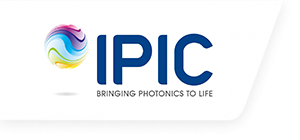Biomedical
‘World’s smallest integrated imaging system for guided surgery’
The objective of the Biomedical theme is to work towards developing the World’s smallest integrated imaging system for guided surgery. In the future, surgeons will require the ability to generate high quality, diagnostic images deep within the body using micro-scale instrumentation such as arterial guidewires. This Theme will develop major novel innovations in micro-scale cameras and surgical platform integration technologies, multi-spectral diagnostic imaging and in-body optical powering and data transmission.
Biophotonics@Tyndall
The biophotonics team is established to conduct research within and develop novel Biophotonics techniques, especially towards integrating technologies, research teams, sectors and companies to deliver novel smart surgical tools and diagnostic systems into the hands of clinicians, thereby improving patient outcome and growing commercial sales. In parallel, we aim to transition these techniques into miniaturised form factors designed for clinical deployment and for manufacture, ensuring that this ambitious research programme also delivers commercial deployment and societal impact. This will result in a steady flow of technologies emerging from our labs and into the clinical setting. These activities are well aligned with Tyndall’s and Ireland’s strategic interests, being hot topics in two identified priority areas of research–Photonics and Medical Devices.
Examples of active research highlights below.
Publications
To view, click Biophotonics-Published-Papers
Research topics
Health during birth
Diffuse optics for children’s and mothers’ health is studied to research the capability to non-invasively monitor parameters related to the health at birth, both of the mother and the foetus. One important feature is that the signals are tagged with the heart beat of the mother and foetus, respectively, allowing, in principle, to filter out the contributions from the two subjects, more or less independently. The research is targeting to find with what accuracy one can obtain the signals and if any other modalities is required to extract the essential information. The projects runs as a collaboration between our team, industrial partners and other academic groups. The novel techniques under development are evaluated in simulations, tissue optical phantoms, pre-clinical and clinical studies in a team effort.
GASMAS
The Biophotonics@Tyndall team is pursuing world-class research in neonatal health care. We focus on collaborative work with clinicians from Cork University Hospital (CUH) and GPX Medical as our industrial partner. The aim of this project is to translate and deliver Gas in Scattering Media Absorption Spectroscopy (GASMAS) technology into a non-invasive bed side clinical device, to monitor lung function and tissue oxygen saturation in neonates. This technology will assist the clinicians in diagnostics of pulmonary desease of the most vulnerable patients.
Why is this technology needed?
Newborn respiratory distress syndrome (NRDS) happens when the neonate’s lungs are not fully developed and cannot provide enough oxygen, causing breathing difficulties. NRDS is a major cause of morbidity and mortality in preterm infants. 90% of infants born within 22-28 weeks of gestational age and 50% of newborns delivered within 30-32 weeks of gestational age will suffer from it.
The current diagnostics of NRDS involves X-ray and ultrasound imaging, which together with pulse oximetry provide static information about pulmonary function, gas filling in the lungs and blood oxygen saturation but not about localized alveolar composition.
The clinical translation of GASMAS technology will allow spectroscopic analysis of the gases enclosed in the lungs of the newborn continuously and in a non-invasive way. This novel light-based technology has the potential to reduce the use of harmful radiation in the diagnostics of NRDS and track the newborn’s response to respiratory treatment in real time.
Acousto-Optical Tomography
Acousto-Optical Tomography (AOT) is a multimodal imaging technique that aims at obtaining optical information from deep within biological tissue by using ultrasound and light. It has huge potential for imaging deep into biological tissue. At IPIC, we are combining AOT techniques with heterodyne holography and wavefront shaping to establish new methods that can help propel AOT in the clinical realm.
In AOT a laser illuminates a medium, while an ultrasound transducer is sending short ultrasound pulses. Some of the light that travels through the ultrasound focused pulse within the medium becomes modulated by the ultrasound. This modulated light is called the tagged light. By using advanced detection methods, the tagged light signal can be distinguished from the background laser light and information about the optical properties at the location of the ultrasound focus can be recovered. This location is known because ultrasound is not scattered in tissue, as a result, it is possible to generating an image point by point by moving the ultrasound focus within the medium.
Tissue Recognition
Modern treatment of brain tumours, such as a glioblastoma multiforme (GBM), requires surgical intervention. The success of the surgery is directly dependent on the percentage of the tumour tissue that remains in the brain after the operation. Unfortunately, current methods of tumour identification are subjective, especially at the interface with the healthy brain tissue, leading to an increased rate of tumour recurrence and reduced life expectancy. To reduce the risk of recurrence, a quantitative method of tumour identification is needed.
Here in BioPhotonics group at the IPIC center, in collaboration with neurosurgeons in Cork University Hospital, we are working to address this challenge by building a multi-wavelengths tissue recognition (TR) instrument. The TR project aims to take advantage of unique optical properties of naturally occurring biomarkers to distinguish between tumour and healthy brain tissue. By illuminating the tissue with distinct wavelengths and simultaneously measuring the reflected and fluorescent light, it is possible to quantify the biomolecule concentration and identify the tissue type using machine learning.
In collaboration with our partners in MedPhab, we are also developing a multi-wavelengths, micro-optical probe for surgical guidance in liver cancer.
Public Engagement
Biophotonics workshop
The BioPhotonics group organises an annual workshop as a part of the IPIC Summer Bursary Programme. The workshop introduces the attendees to the use of optical tools for healthcare applications, along with general concepts and discoveries that changed the world. This year’s workshop was given remotely and the full course material is made available online.
Please join us in our journey by accessing our webinars here.
You can also make home experiments with simple products of our Biophotonics box! Material and instructions can be found here.
Finally, we developed a tissue optics app that requires no programming background from the students. Instructions are available here and the app can be found here.




